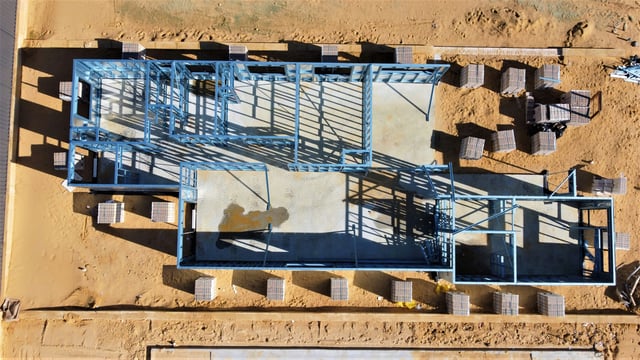
Waterproofing isn’t just a precautionary measure - it’s a fundamental aspect of construction and maintenance that ensures the durability and longevity of buildings. Whether you’re dealing with a commercial complex or a residential property, mastering effective waterproofing can save you from costly repairs and structural damages down the line.
In this comprehensive guide, we delve into the importance of flawless waterproofing, explore the selection of appropriate materials, discuss proper application techniques, and emphasize the significance of regular maintenance.
Why Waterproofing Matters
Water is one of the most pervasive threats to building structures. Without adequate protection, it can seep into foundations, walls, roofs, and basements. This leads to a myriad of problems, like mold growth and structural deterioration, and can even compromise the integrity of the entire building.
Effective waterproofing acts as a shield, preventing water infiltration. This safeguards the structural integrity of the building against moisture-related damage.
Selecting Appropriate Materials
The success of any waterproofing projects depends heavily on using the right materials, from sealants to coatings.
Sealants
These are versatile products used to fill gaps, joints, and cracks in various building surfaces. Silicone, polyurethane, and acrylic sealants are commonly used for their flexibility and adhesion properties. These sealants can be applied to both the inside and outside of a structure. They are perfect for small cracks or other gaps, and can improve energy-efficiency by protecting against water damage and drafts.
Membranes
Waterproofing membranes are thin layers of material applied to surfaces to prevent water penetration. They come in various forms, like modified bitumen or PVC, and are durable yet flexible enough to be applied to exterior surfaces like roofs, walls, and foundations.
Coatings
Waterproofing coatings are applied to surfaces to create a protective barrier against water. They can be applied as a liquid or sprayed, and are available in different formulations like acrylic, polyurethane, and cementitious. Consider the substrate material, exposure to weathering, and desired durability when selecting a coating.
Drainage Systems
If your property is in an area with extreme amounts of snow or rainfall, a drainage system offers an extra level of protection against water damage. They help manage excess water by providing pathways for it to travel away from the structure. This option is perfect for protecting the foundation of the building and improving overall durability. Some common drainage systems are french drains, which channel water away from foundation on the exterior, and sump pumps, which are installed in the interior of the building and remove accumulated water from below ground level.
It's important to note that integrating these methods – waterproofing the building's exterior, sealing cracks, and implementing a drainage system – can offer unparalleled protection against water infiltration.
Ensuring Proper Application
Proper waterproofing creates an impenetrable barrier that prevents water penetration and protects against potential water damage. Correct application processes are crucial for the effectiveness and longevity of waterproofing systems.
Surface Preparation
Surface preparation is incredibly important for waterproofing. If you neglect this stage of the application process, the performance of the waterproofing system can be compromised. Start by cleaning the surface thoroughly, repairing any defects or cracks along the way. Then, ensure proper adhesion of the waterproofing materials.
Attention to Detail
A high level of attention is paramount during the installation process. Proper seam sealing, overlapping of membranes, and application thickness are critical factors that contribute to the effectiveness of the waterproofing system. Take the time to follow all manufacturer guidelines and best practices–even if they seem unnecessary to you–to achieve optimal results.
Contribute to Longevity and Resilience with Regular Maintenance
A well-executed waterproofing project can significantly extend the lifespan of a building and enhance its resilience against water-related challenges. Regular maintenance is essential to ensure continued protection.
Here’s how you can contribute to the longevity and resilience of your waterproofing system with regular preventive maintenance.
- Schedule regular inspections to identify any signs of damage or deterioration in the waterproofing system. Pay attention to areas prone to water accumulation, such as basements, roofs, and exterior walls.
- Address any issues or defects found during inspections as soon as possible. Prompt repairs can prevent minor problems from escalating into major structural issues. It is always recommended to contact an experienced professional to take care of all issues found during inspections.
- Keep gutters and drains clear of debris to ensure water is draining properly away from the building. Clogged gutters and drains can lead to water pooling around the foundation, increasing the risk of water infiltration.
- Over time, protective coatings may deteriorate from exposure to the elements and other environmental factors. Reapplying these coatings periodically can help maintain the optimal level of protection.
From residential basements to commercial roofing, mastering effective waterproofing techniques is essential for keeping water at bay. With the right materials, skilled application, and a commitment to maintenance, you can achieve an impenetrable moisture barrier that safeguards your building against water-related damages for years to come. Click here to learn more about out waterproofing services.